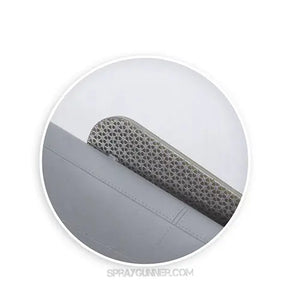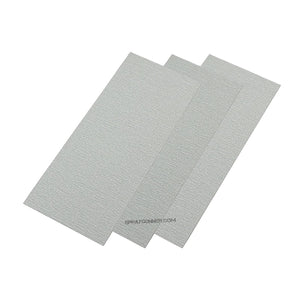-
 Vendor:AMMO by Mig Jimenez
Vendor:AMMO by Mig JimenezAMMO by MIG Accessories - AMMO Abrasives Quatrofile
Regular price $3.46 USDRegular price -
Sold out
 Vendor:AMMO by Mig Jimenez
Vendor:AMMO by Mig JimenezAMMO by MIG Accessories - POLISHING SANDING STIKS
Regular price $3.22 USDRegular price -
 Vendor:AMMO by Mig Jimenez
Vendor:AMMO by Mig JimenezAMMO by MIG Accessories - MULTIPURPOSE SANDING STICK
Regular price $2.34 USDRegular price -

 Vendor:AMMO by Mig Jimenez
Vendor:AMMO by Mig JimenezAMMO by MIG Accessories - ROUGHING FILE - 1pc
Regular price $4.00 USDRegular price -
 Vendor:AMMO by Mig Jimenez
Vendor:AMMO by Mig JimenezAMMO by MIG Accessories - LARGE SURFACE SANDING STICK
Regular price $2.28 USDRegular price -
 Vendor:AMMO by Mig Jimenez
Vendor:AMMO by Mig JimenezAMMO by MIG Accessories - Flexand Double Sided Sanding Sponge
Regular price $3.46 USDRegular price -

 Vendor:Tamiya
Vendor:TamiyaTamiya Finishing Abrasives P320 (3PCS)
Regular price $2.50 USDRegular price -
Sold out

 Vendor:Tamiya
Vendor:TamiyaTamiya Finishing Abrasives P240 (3PCS)
Regular price $2.50 USDRegular price -

 Vendor:Tamiya
Vendor:TamiyaTamiya Finishing Abrasives P180 (3PCS)
Regular price $2.50 USDRegular price
Model sanding tools – sticks, sponges & sandpaper
Surface prep is where great finishes begin. The model sanding tools in this collection give you precise control for seam removal, edge refinement, and final paint prep—without flattening details or rounding corners you want to keep sharp. From flexible sponges that follow curves to hard-backed sticks that true up joints, every tool here is chosen to help you move from rough shaping to mirror-smooth finishing with predictable, repeatable results.
What’s in this collection
• Sanding sticks and files for fast, flat stock removal on sprue gates, seams, and puttied joints. Hard backers keep edges straight and help you square parts for clean assemblies.
• Flexible sanding sponges that conform to curves and compound shapes—ideal for fuselages, car bodies, cowlings, and figure capes—while minimizing flats and flats spots.
• Tamiya Finishing Abrasives (P400–P2000) sheets for controlled progression from shaping to paint-ready surfaces, including Ultra Fine sets for clear parts and gloss finishes.
• Specialty tools such as multipurpose, polishing and roughing sticks that jump between material removal and pre-buffing before primer.
Each tool in this model sanding tools lineup complements the others, so you can step through grits methodically and avoid over-sanding.
Why these tools improve your results
The wrong abrasive can tear plastic, leave deep scratches, or round crisp panel lines. Purpose-made model sanding tools control pressure and bite, letting you remove only what you intend. Sticks keep surfaces true; sponges float over curves; premium papers finish clean without loading.
• Consistent grit ratings deliver predictable scratch patterns across P400–P2000.
• Durable binders resist tearing and clogging, extending each tool’s useful life.
• Ergonomic formats (sticks, sponges, sheets) reduce fatigue and improve accuracy.
• Paint-ready surfaces mean fewer coats, smoother gloss, and sharper decals.
Pro workflow: from seam to shine
• Start shaping at P400–P600 to knock down sprue nubs and filled seams with a hard-backed stick or file.
• Move to P800–P1000 on a sanding sponge to blend transitions and follow curved geometry.
• Refine with P1200–P1500 to erase prior scratches; keep strokes in one direction to monitor progress.
• Finish at P2000 (or finer) before primer on glossy subjects; for clear parts, wet-sand and then polish.
• Clean with a soft dust remover brush and mild soap rinse to remove residue before priming.
Tips to protect detail
• Mask raised rivets and delicate lines with tape while sanding nearby areas.
• Use short, controlled strokes along panel lines to avoid rounding.
• Replace worn abrasives early—dull media burnishes rather than cuts, causing uneven sheen.
• Wet-sand when possible to minimize clogging and keep plastics cool.
With the right model sanding tools, prep becomes quick, consistent, and safe for detail—so paint lays down smoother and finishing steps take less time.











